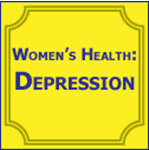You have no items in your shopping cart.
eBooklets with Test
Paradise Regained: Achieving Remission in Depression - Booklet
Identifies pharmacological, herbal, and integrative approaches useful in remission-oriented management of unipolar depression/major depressive disorder and bipolar disorder. Outlines the issues of neurotransmitter-affecting medications, associated side effects, and interactions with other medications, including drugs used in dental practice. Discusses the optimal strategies for treatment augmentation in cases of treatment-resistant depression. Discusses experimental treatments for depression (e.g., transcranial magnetic therapy and vagus nerve stimulation) with patients.
$25.00
Non-traditional Approaches: Anxiety, Insomnia, & Depression - Ebooklet
Identifies and describe cognitive behavioral therapy techniques used in treatment of insomnia, depression, and anxiety. Discusses how existing communication technology expands psychotherapeutic treatment options. Lists reasons why many people with anxiety disorders never seek medical help. Discusses how non-traditional approaches can improve patient care and outcomes.
$25.00
Stimulants: Caffeine, Amphetamines, etc. - Ebooklet
Identifies the physiologic, pharmacologic, and psychoneurologic properties of stimulants. Outlines the issues of caffeine toxicity, caffeine withdrawal, and management of caffeine-related disorders. Describes the mechanisms involved in amphetamine addiction and approaches to management of this condition. Identifies stimulants and stimulant-like medications used in weight reduction and appetite suppression.
$25.00
Stop Losing Sleep - Ebooklet
Outlines the classification and diagnosis of sleep disorders, including various insomnias and circadian rhythm anomalies, restless legs syndrome (RLS), and periodic limb movement disorder (PLMD). Identifies other conditions that may contribute to sleep disorders, including neurological, endocrinological, and psychological disorders. Describes the approaches to management of sleep disorders, both pharmacological and nonpharmacological (e.g., dietary, hygienic, and psychosocial). Identifies clinical ramifications of sleep apnea and RLS/PLMD pertinent to dental practice and general clinical practice.
$25.00
Poles Apart: Unipolar vs. Bipolar Depression - Ebooklet
Identifies the basic neurophysiology, pathogenesis, etiology, and diagnosis of affective unipolar disorder/major depressive disorder (UD/MDD) and bipolar disorder (BD). Discusses the involvement of various chemical imbalances in these affective disorders, including neurotransmitters and neurohormones such as serotonin, norepinephrine, dopamine and cortisol. Lists the differential diagnosis of these conditions and the management of both disorders. Describe the spectrum of available pharmacological, psychotherapeutic, and experimental therapies for both conditions.
$25.00
Women's Health: Chronic Pain - Ebooklet
Describes the difference between chronic and acute pain. Identifies the symptoms of and treatments for chronic pain conditions affecting women. Discusses the role of home remedies, relaxation techniques, and other non-drug therapies for treating chronic pain. Explains the psychosocial aspects of treating chronic pain. Describes how to manage use of pain medications, including opioids, to ensure patient safety.
$25.00
Women's Health: Depression - Ebooklet
Identifies the most prevalent forms of depression. Identifies the symptoms of depression and mania. Identifies the differences in presentation across age groups and sexes. Compares the theories of depression. Reviews depression treatment modalities.
$25.00
Women's Health: Insomnia - Ebooklet
Discusses the physiology of sleep. Describes healthy sleep patterns. Identifies the different types of insomnia. Discusses women’s sleep problems across their life cycle. Identify treatments for insomnia including optimal sleep hygiene, behavioral methods, and pharmaceuticals.
$25.00








